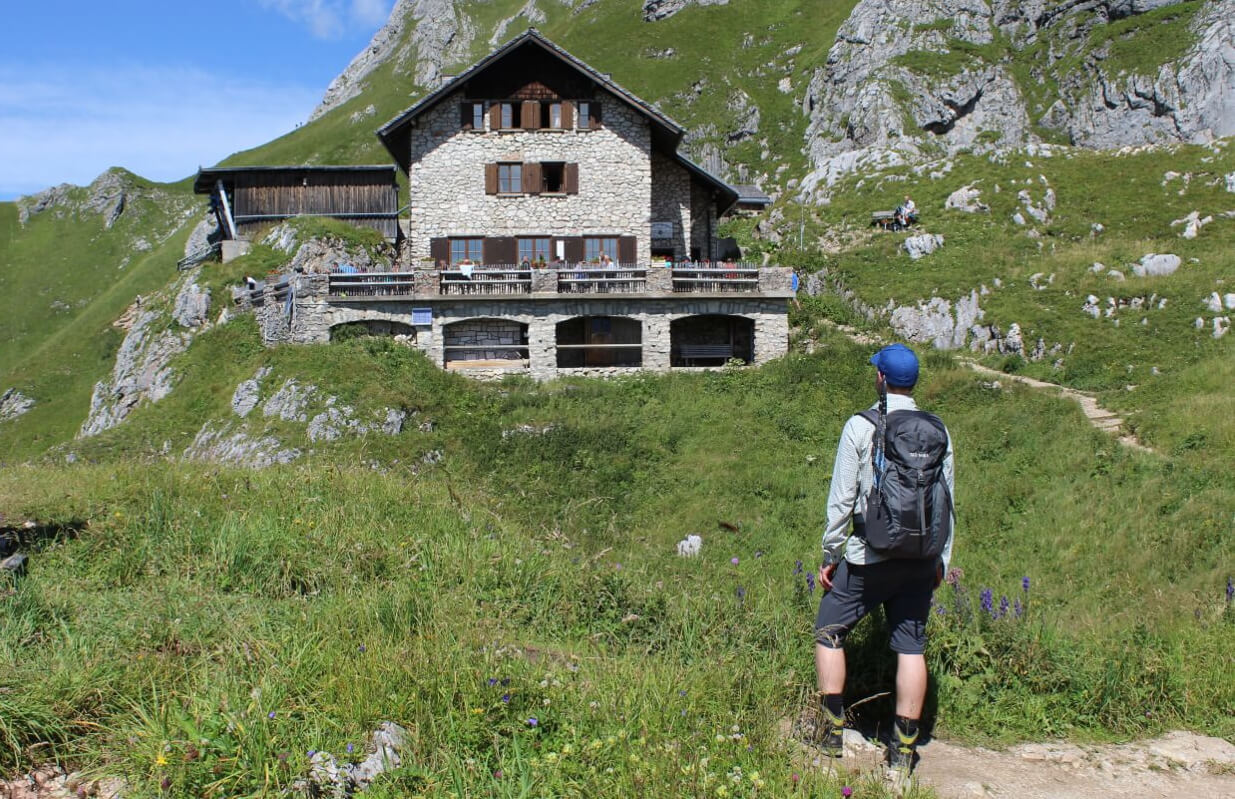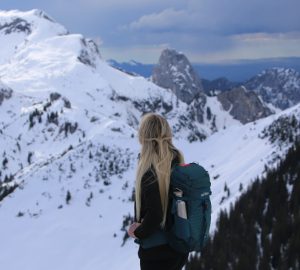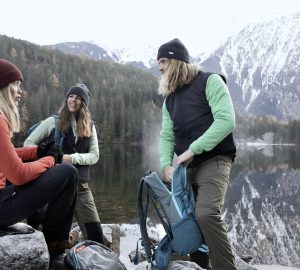What could be better than ending a mountain tour in a mountain hut? For many hikers and mountaineers, the ultimate reward after a strenuous tour is to lay their tired legs down in the hut bed or enjoy a hot chocolate on the terrace, including a magnificent panoramic view. Because of the prospect of this kind of reward and because of the increasing popularity of mountain sports, the run on the coveted hut places is great. For many it is the first time that they spend the night on a mountain. However, a hut should not be confused with a hotel. There are certain “laws” that you should urgently adhere to, unless you want to get into trouble with the hut host or other guests. I’ll show you the 10 golden rules of a hut.
Information [May 2022]:
Due to Corona, there may still be restrictions at huts. Here are the current regulations on Bavarian DAV huts:
– No distance obligation
– No mask obligation
– No Corona test required for entry
– General protection and hygiene measures remain recommended. These include keeping the minimum distance, wearing medical face masks indoors, and voluntary hygiene concepts (disinfection etc.).
Further notice:
Due to the corona-related additional expenses incurred for the management of huts during the corona pandemic, hut managers can set a hygiene contribution to be paid by the guests. This may be up to a maximum of €3 per night for day guests and €5 per night for overnight guests.
Please note that the rules vary from region to region and can change daily. We recommend you to check with the respective huts in advance.
You can find out which DAV huts are open and whether overnight stays are possible there on the website of the German Alpine Association.
Not all huts are the same – mountain accommodations of categories 1, 2 and 3
Which comfort you want to take advantage of in a mountain hut is first of all up to everyone – the range of huts, lodges and lounges is wide and varied. Huts of the alpine associations DAV, ÖAV and AVS are divided into different categories:
- Category I
- Category II
- Category III
Category I and II huts are available as accommodation and, if managed, also offer food to the climber. Category I huts can also be pure refuges or a bivouac.
Great luxury, which is usually offered by so-called mountain lounges, may not be expected on a mountain hut with original character. So you won’t find a Jacuzzi or a sauna there. But let’s be honest: It is precisely the lack of luxury that makes a stay in a mountain lodge so special – in addition to the beautiful nature and breathtaking views, of course.
There are also category III huts (e.g. mountain inns). These are usually accessible via a cable car or lift and are mainly aimed at day trippers. The catering offer is much more extensive.

Alpine Club membership brings advantages
By the way, you support mountain huts of category I and II with your membership fee at the Alpine Club. If you are often on the trails in the mountains and not yet a member of an alpine club, I recommend you to take out a membership. In addition to special offers of the individual sections, as a member of the Alpine Club you are automatically insured worldwide in case of alpine accidents and benefit from certain advantages on huts compared to non-members.
You also contribute to nature conservation and the preservation of hiking trails and via ferrata routes. The active members of the alpine clubs maintain them annually and mostly on a voluntary basis.
Tip: How you can best organize your hut tour, we explain in our article: Planning hut-to-hut hikes.
The 10 golden mountain hut rules
In order to make your stay in the hut as pleasant as possible, you should follow a few rules. The hut staff and the other guests will be very grateful to you 😉.
1. Reserve your place to sleep!
You plan your tour with a rustic overnight stay in a hut and you already know exactly which one it should be? Congratulations! Your tour will be great. But you are not the only one who has this idea. Because many other climbers have exactly the same thing in mind.
To avoid an unpleasant surprise when you arrive at the reception, tired and exhausted, it is advisable to reserve a place to sleep in advance. Although huts are only allowed to allocate a maximum of 90 percent of the available sleeping places in advance, the remaining ten percent can also be gone quickly.
Another advantage: If you are early enough, you may even be able to choose your sleeping place. Of course, this depends on the room offers of the respective hut.
2. Cancel your sleeping place!
This rule should be good manners, but unfortunately many people disregard it. So if for some reason you decide not to take your place in the mountain hut, please let us know. The owner of the hut will be happy, because he will be able to give your place to someone else in time. Depending on the hut, you may have to pay a cancellation fee.
This also applies if you realize during the tour that you will not be able to reach the hut, for example due to time problems. Even then you should inform the hut host.

3. Hiking boots also have their own place!
You should take off your hiking boots at the latest in the entrance area and put them down. In many huts there is also a drying room. By the way, shoes have no place in the sleeping quarters. After all, you’re in your hiking boots all day. The noses of your roommates will thank you 😉.
4. Sleeping bag liner is a must!
Although many huts equip their beds with pillows, blankets and sheets. Unlike in a hotel, however, hut hosts cannot have the bedding washed after each guest. So it is very likely that other guests have slept in the bedding before you and others will do so after you.
For hygienic reasons, the use of a sleeping bag is therefore usually mandatory!
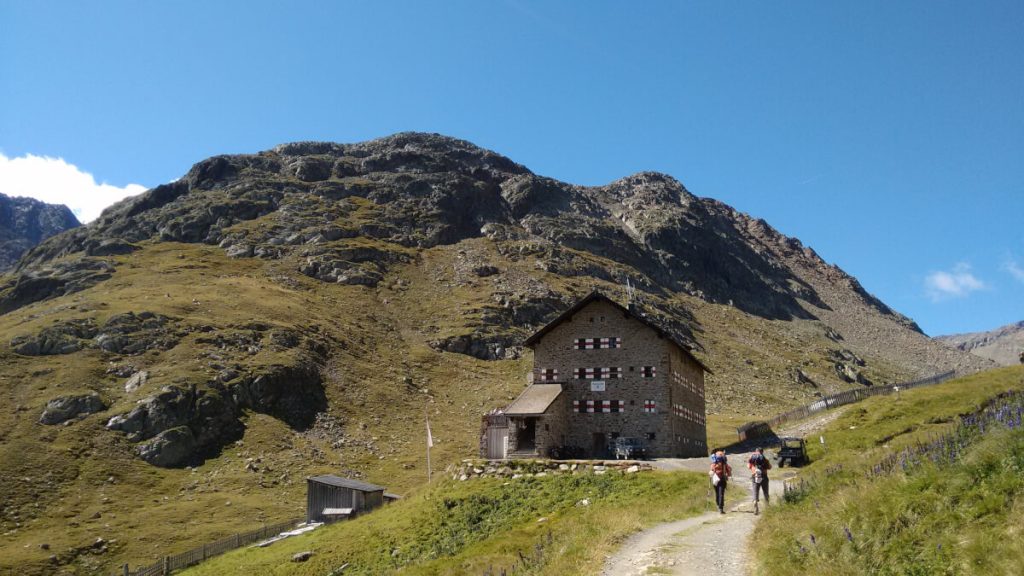
5. Seats are not reserved!
You know it from hotels. Quickly thrown the towel on the couch the night before and it is already reserved. What works in hotels (often), surely also applies to cabins. Jacket on the chair and already the place for dinner or breakfast is secured?
Wrong thought. If there is no free place when you come into the room, you have to wait by necessity. But don’t worry: it’s common practice at cabins to vacate your seat as soon as you’re done eating. So it shouldn’t take you too long to get a free seat.
If you do use the reservation trick, don’t be surprised if you find yourself looking for your jacket afterwards.
By the way: Due to the limited space available, it is common practice in mountain huts to sit at the same table as other guests. If you join them, you still have to ask politely for permission.
6. Respect the silence in the huts!
In most huts there is a hut rest. Firstly, the mountains are not a party mile in a tourist hot spot and secondly, many hikers and climbers leave early the next day. Therefore, everyone also wants a long and restful sleep as possible. Even if you are not an early riser, you should still respect the night’s rest out of consideration for the other guests!
In most huts it is between 10 pm and 6 am.
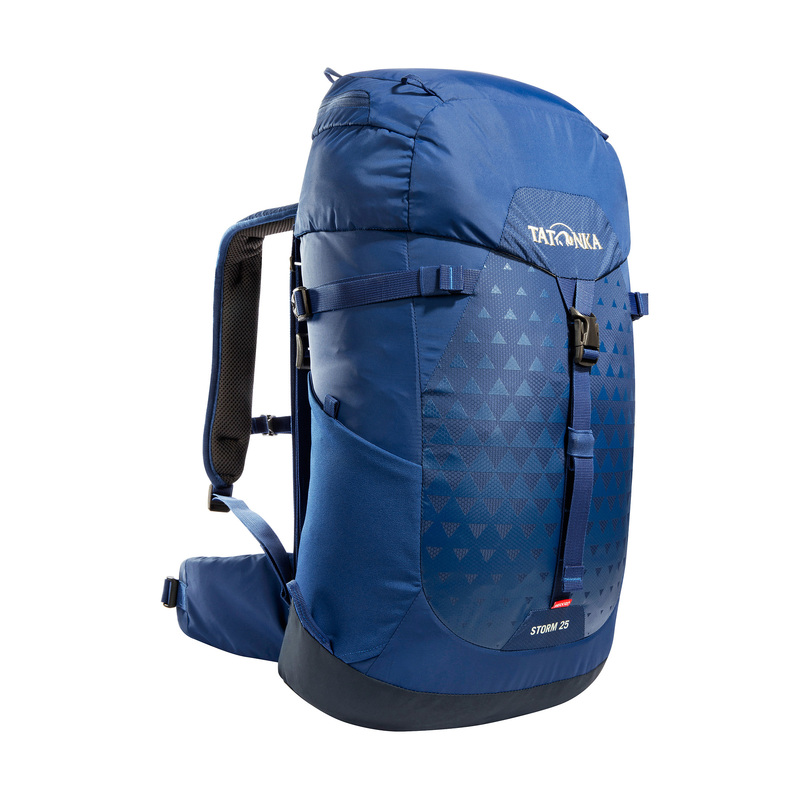
At Tatonka you will find backpacks equipped with a RECCO reflector.
This enables professional rescuers to quickly locate missing persons from the air.
7. Register in the hut book!
Before you leave, you should in any case sign the hut book. Your entry does not serve the motto “I was here”. The interest in it would probably be extremely limited 😉. Rather, it serves your own safety.
In the hut book you usually enter the time of your departure and your next destination. Should something happen to you on tour, which is always possible in the mountains, your route is traceable for rescue teams. The search area can be clearly narrowed down in case you go missing.
For this reason, it can also be useful to provide your cell phone number. However, you must decide for yourself whether you want to do this.
8. The visitor is guest and not king!
You surely know the saying “The guest is king”. For hotels this may be true, but even there an appropriate behavior is the minimum. But a mountain hut is not a hotel. The entire hut staff makes every effort to make your stay as pleasant as possible (at least in most mountain huts 😉). And this endeavor is a real feat. So in a hut you are not king, but a guest. And that’s how you should behave.
But I’m sure you’ve already felt the same way.
9. Take your garbage with you!
This rule should have internalized every mountain hiker anyway. Everything (!) that you bring yourself, you also take back with you! This applies not only in huts, but generally in the mountains and nature. So don’t confuse a hut with a garbage dump – and the mountains anyway.
Even if there are trash cans in the hut, that doesn’t automatically mean you can just dump your trash there.
So if your shampoo bottle happens to be empty while you’re standing under the cabin shower, just take it back with you and dispose of it in the valley.
It’s best to avoid waste as a matter of principle. A shower and hair soap as well as “unpackaged” food are very good for hut stays.
10. Hut rules are law!
In almost every hut you will find a notice with the hut rules that apply there. But these rules do not hang there to decorate the wall. These rules are there to be obeyed. Read them carefully before you try to explain to the hut staff that you didn’t know anything about them.
Remember, hut rules are not recommendations that you can follow. They are the law!

Tours and tips on our blog
If you have now decided to grab your backpack and head to the next hut: On our blog you can get inspired and get valuable tips:




